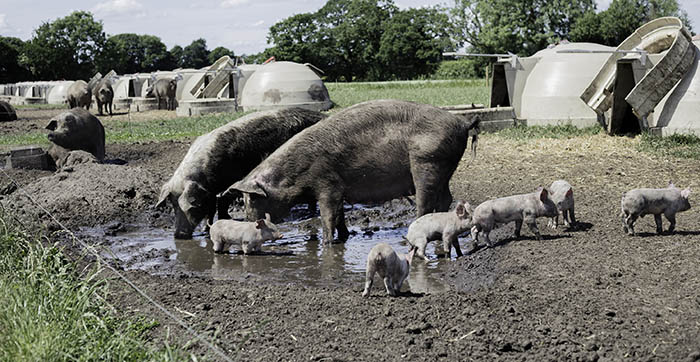After the problems caused by last year’s heatwave, Primary Diets offers advice for maintaining weaner weights in high temperatures
Warmer weather can see weaning weights drop by more than 1kg, so a summer feeding strategy should be considered now for rapid implementation when necessary, according to advice from piglet feeding specialists at Primary Diets.
While the impact of hot weather tends to focus on breeding sows and grower/ finishers, the company’s nutritionist Dr Sadie Douglas recommends having a plan to limit the reduction in milk yield and, therefore, weaning weights, so the effect of heat stress on nursery pigs is minimised.
“Higher temperatures mean the sow tends to reduce her feed intake to help regulate her own internal heat production, and this reduction can happen pretty quickly,” said Dr Douglas.
“The impact during lactation can be a reduction in milk volume for suckling pigs, although, where possible, the sow will first utilise reserves and lose body condition before milk volume is sacrificed.
“However, the knock-on effect is smaller weaning weights for offspring or potentially greater variability within litters as a reduction in milk volume is likely to impact pigs differently within the litter.
“While this is typically considered to be an issue for outdoor units, our data suggests that pigs from both indoor and outdoor units can suffer decreased weaning weights in the summer months.”
PREVENTION
According to Primary Diets, efforts to prevent a drop in weaning weights in hotter weather should be largely focused on maximising sows’ milk yields and the following should be considered to minimise the effect of heat stress on her:
- Water availability is key. In order to produce milk, sows must consume water and therefore insufficient access could limit milk production. Water requirements are likely to increase, partly because of water losses due to panting. Research has suggested that water intake during gestation may also affect litter weight and piglet colostrum intake. Therefore making sure that the breeding herd has adequate access to water is vital;
- The timing of feeding can help pigs to adapt to the hotter weather. Pigs prefer to eat during the cooler times and therefore are most likely to eat at the start and end of the day. If using an integrated feed system, timings can be altered to dispense feed during the early morning and late evening, or smaller drops throughout the day to make sure it stays fresh;
- A top dress product could be fed during periods of hot weather to boost nutrient intake when feed intake is low.
PIGLET STRATEGIES
Research indicates that piglets will eat more pre-weaning creep feed during hotter weather, potentially to mitigate the reduction in milk quantity available from the sow.
“For indoor producers, this could mean simply increasing the amount of pre- weaning creep feed provided to piglets while the weather is warmer,” added Dr Douglas. “And while we appreciate it is not commonplace for outdoor producers, offering creep feed pre-weaning during the summer months may also be a useful strategy to boost their weaning weights.”
The company noted that feed intake of weaner pigs is not likely to be affected by the hot weather, given their size.
However, producers do need to account for their lower body weight as nursery regimes may no longer be optimal for the size of the piglets being weaned.
“The easiest way to do this is to increase the nutrient density of the diets, so we advise moving to a higher specification regime during the summer months and keeping the quantity of feed the same,” Dr Douglas said.
“Conversely, keeping the diets the same but increasing the amount fed can also ensure that pigs are moving onto their link diet at the ideal weight, although bear in mind this can mean pigs will take longer to eat the increased feed ration.
“Ultimately, the optimal solution will be farm-specific, so it is important to discuss implementation of a summer regime with your feed supplier.”




